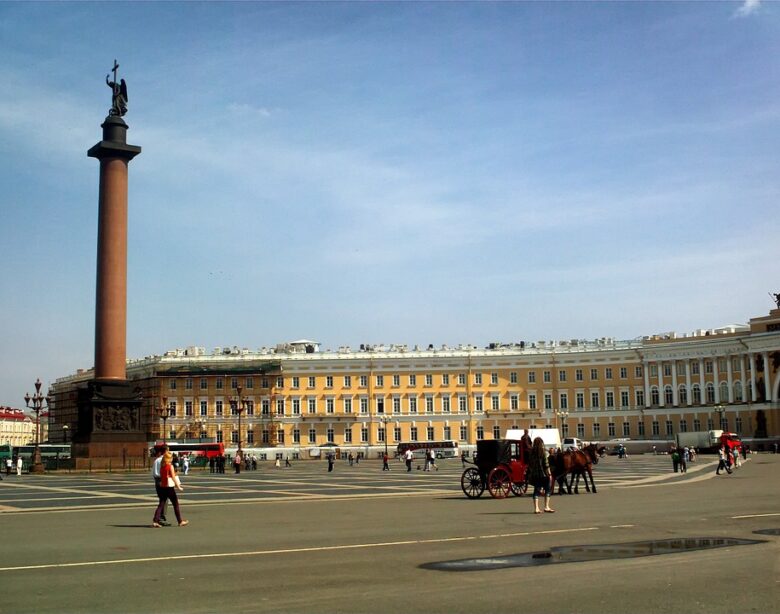[ad_1]
In the early months of 2023, astronomer Željko Ivezić found himself involved in a highly unusual negotiation. Ivezić is the 59-year-old director of the Vera Rubin Observatory, a $1 billion telescope in the United States. Developed in the Chilean highlands for more than 20 years, he is trying to reach an agreement that would prevent his telescope from affecting America’s national security when it begins stargazing next year.
This work is strange enough for any scientist. And even more so by the fact that Ivezić had no idea who he was negotiating with. “I don’t even know which agency I’m talking to,” he told me in a recent video call. This is from the field office in Chile. Regardless, who communicated with him only through the intermediary of the National Science Foundation, Ivezić did not even know if one or more people were on the other side of the exchange. What he knew was that they took safety very seriously. Moreover, they seemed to know a lot about astronomy.
Vera Rubin is housed in a modern mountaintop building in the Atacama Desert. The chamber that holds the main mirror protrudes from the end of the long structure like the head of a sphinx. The observatory shows a strange increase in human vision. The same goes for the James Webb Space Telescope that NASA launched a few years ago. Will be able to look out to the ends of the universe. But Webb was only able to observe a small portion of the sky. Vera Rubin was able to lock onto a much larger tile and, after 30 seconds, send out an image of that tile extending into space. 13 billion light years away It will then pan and lock to the adjacent sky pad and do the same thing. After just three nights of taking tiled photos like a bathroom wall repairman again. Such an image will provide a deeper image of the entire sky.
National security is concerned about what Vera Rubin can see. Ivezić tells me that each of his full-sky images will contain more than 40 billion objects. This is more than any previous survey of this type. It all added up many times over, when Vera Rubin saw an object she had never seen before. It will alert astronomers. If a star explodes billions of light years away An algorithm will detect it. and the community will be notified. If a near-Earth asteroid hits us Scientists will know to zoom in on it immediately along with other observatories. The problem is, if spy satellites or other secretive spacecraft come see That could then be flagged and its location broadcast in real time to people around the world.
The Pentagon doesn’t like anyone knowing much about satellites. during the cold war The United States is more secretive about what it does in space than in the nuclear empire, says Aaron Bateman, historian at George Washington University and author. space weapons– The United States is aware of the general outlines of its nuclear arsenal. No matter how many weapons and transport vehicles there are. But it is likely to be more cautious about its military space capabilities. Bateman told me about the existence of the National Reconnaissance Office. It is the agency responsible for developing U.S. spy satellites. Until 1992 it was classified as NRO. Still in operation These satellite fleets But exact details about how many satellites and what types they are remain secret.
Vera Rubin Observatory has a tendency to make eye contact with some people uncomfortably. Most are telescopes in themselves. But instead of tilting upward towards the sky, it pointed downward towards the earth. Two characteristics of this telescope have existed since its inception. After his invention Galileo write to the ruler of Venice regarding his ability to spy on enemy ships He also vowed to keep the device a secret. At the beginning of the Cold War The British government monitored Soviet satellite and missile tests with the Jodrell Bank Observatory in Manchester.
This type of aid also flows in the opposite direction, from spies to civilians. During the Apollo missions NRO spy satellites have captured images of potential lunar landing sites. They also inspected a damaged panel on SkyLab, NASA’s first space station, in 1981 during the space shuttle’s first flight. NASA astronauts flip a space shuttle so that an NRO satellite can catch a close-up of the heat shield. to see how the shuttle resisted atmospheric friction Only a few people in the agency be careful of operation
The public only learned about the true extent of the government’s optics powers after a long delay. Space historian Dwayne Day recently told me that the intelligence community had been working on large-scale optics in space before NASA. Will begin working with Hubble in 1977, he says, technology that allows today’s ground-based observatories to see through the blurring of the atmosphere was first developed. by the military and then later shared with civilian astronomers. NRO may have all kinds of telescopes. In 2012, the agency even Give to NASA The Hubble Observatory is a surprise gift. It was just lying there.
Ivezić knew that the Vera Rubin Observatory would have to avoid revealing the full extent of America’s space surveillance equipment. He agreed to create a system that would remove secret information from the telescope’s images. But he and his mysterious interlocutor disagreed at first about how it should work. Some of their concerns were easily alleviated. The Defense Intelligence Agency is sometimes asked to notify when foreigners use America’s most powerful radio observatory. Just in case those people pointed them towards something sensitive. No such protocol is required for Vera Rubin’s Chilean operator, as the telescope has a fixed observation plan for 10 years. Ivezić said he showed it to his government and assured them that no one would be able to deviate. From it
Ivezić is most concerned about the possibility that he will be used for a system like the one he says the Air Force designated for a much less powerful astronomical survey called Pan-STARRS about a decade ago. before Images taken with the project’s telescope in Hawaii were sent to a military facility—“dark side,” as Ivezić puts it—where they were edited before being sent to astronomers. The fix doesn’t require much surgery. “You will get your image back. And all military assets will be concealed,” Ivezić told me. “It looks like someone has drawn the line. And it has such a huge impact on science that people can do it.”
After some back-and-forth, Ivezić said, he and his colleagues devised a less invasive way to remove secret American assets from the observatory’s immediate notification. A government agency that no one told him would invest $5 million to create a dedicated network for moving sensitive data. Each time the telescope captures a 30-second window of the sky, the file is immediately encrypted without anyone ever seeing it. It was then sent to a secure location in California.
Next, the automated system compares the image to previous images of the same tile. exploding star or spy satellite It filters out stamps that may reflect secret U.S. property. and one minute later It sends the rest along with the coordinates to an alert service for astronomers around the world. Three days and eight hours later All tile images will be released to astronomers. untouched by black marker or any other editing technology.
When that time comes The spy satellite is likely elsewhere. After all, they are elusive. Their orbits are irregular and they change direction frequently. Even the world’s most accomplished astronomers cannot deduce their current location from the light trails passing through a three-day-old image.
Ivezić told me that the duration of the data embargo was the most difficult term to resolve. He initially asked for the full picture to be released after 10 hours. He said his negotiators wanted it to be around seven days. In the end, Ivezić was satisfied with the middle ground they had agreed upon.
This account of the negotiations comes primarily from Ivezić. Officials at the National Science Foundation and the Department of Energy confirmed some general outlines of his story. But he would not reveal who he was negotiating with. or the name of the agency paying for the encrypted network. Space Force declined to comment on the process. NRO said it had no information to offer to me about any observatories.
Ivezić has nothing bad to say about his mysterious interlocutor. On the contrary He told me that they seemed genuinely concerned about the risk of compromising Vera Rubin’s scientific mission. ‘The law is on our side. You must do this. And that’s the end of it,” Ivezić said. “Ultimately. We are spending $1 billion of government money,” he added with a laugh.
[ad_2]
Source link



